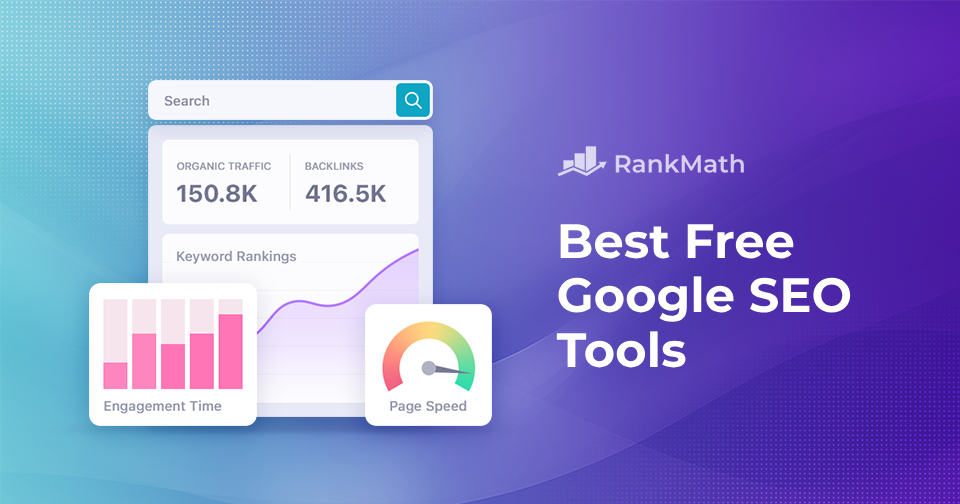
Want to know the secret to lucrative & long-lasting client relationships?
You need to set realistic expectations with new clients right from the very beginning. That includes being transparent about pricing & upfront about the results clients can expect from your services.
That’s the best way to build trust amongst your clients, which will help you develop a loyal following.
Setting clear client expectations is the best way to improve your retention rates, which are crucial to the success of your business.
In fact, retaining your existing clients can boost your profitability from 25% to 95%, and about half of a company’s revenue comes directly from its most loyal customers.

Beyond that, acquiring new customers can cost 5 to 7x more than retaining existing ones.
That’s why it’s worth developing a client onboarding system where you set clear expectations straight from the get-go. Not only will this help you avoid miscommunications & false hope for services you don’t offer, but it’s also great for avoiding undesirable clients that will only cause trouble.
That’s because setting client expectations isn’t just for the benefit of the client; it’s also a way for you to determine if they’re a good fit for your agency.
Managing client expectations is a crucial skill for any agency to master, so stay tuned to learn effective tips for getting real with your clients.
Why is it Necessary to Set Client Expectations?
Miscommunications are frustrating whenever they occur, which is why setting expectations matters so much – and that applies to more than working relationships.
For instance, have you ever been waiting hopelessly by the phone in hopes of hearing back from a job interview, only to realize they filled the position a week prior without telling you?
That’s a perfect example of a failure to set expectations on behalf of your interviewer. They could have mentioned when they planned on filling the position or when you could expect to hear back.
Since they didn’t communicate or set expectations, you wasted time waiting for a call that was never going to come.
Similar things can happen if you aren’t transparent with your clients about how your agency works.
Without setting the proper expectations in place, you risk disappointing your clients in ways you couldn’t possibly anticipate.
For example, if you aren’t clear about the end goal you’re trying to achieve, your clients may expect more than you’re able to deliver, which can ruin your working relationships.
The good news is those types of situations are completely avoidable if you’re upfront about what you can deliver for your clients.
Good communication is another core component of setting client expectations.
Staying in constant touch with clients will help avoid miscommunications, and it shows that you care about the work you’re providing for them.
Failing to set clear expectations is a leading cause of poor client retention rates, which is why it’s necessary to set them as soon as possible.
Benefits of Setting Expectations for Clients
Now that you know why you need to set client expectations for a better customer experience, how will they benefit your business?
There are quite a few perks you’ll enjoy from setting clear client expectations, including the following:

They get rid of any surprises
The last thing you want is for a roadblock or pricing issue to come as a surprise to your client. Surprises are rarely a good thing in the professional world, especially for marketing strategies that require intricate planning.
Setting expectations will ensure there are no surprises from either party, which is ideal for forming lasting relationships.
They leave little room for confusion
Setting expectations is all about being upfront and laying everything on the line. As a result, your clients will have a clear understanding of the results you’re going to deliver and how long it will take to deliver them.
Otherwise, your clients may feel left in the dark, especially when it comes to deliverables, so be sure to cover everything during your onboarding process.
They provide boundaries for firing clients
Not every client you work with is going to be a perfect fit for your agency. In fact, the truth is you’ll likely have to fire more than a few clients due to a variety of different issues.
It could be that the client isn’t willing to pay your rate or that they’re expecting too much from your team.
Whatever the reason is, if you set clear expectations from the get-go, you’ll be able to pinpoint why the relationship isn’t working when it comes time to part ways with troublesome clients.
Setting boundaries is an integral part of setting client expectations, as the onboarding process is also there to protect you, not just your clients.
They provide a clear direction for your team members
You need to include your team in the client onboarding process, as it will provide them with clear direction on what to do as well.
If your team is present when you’re laying out expectations for your client, they’ll know which direction to take with their marketing strategy, leading to better teamwork.
If they aren’t around for client onboarding, your team may lack a sense of direction with their work, and they may even do something your client doesn’t want – which is why you need to include them in the process.
How to Manage Client Expectations
Being able to set realistic client expectations is a necessary skill for any marketing agency, regardless of your niche focus.
From developing SEO strategies to managing social media campaigns, your clients need to know what you’re going to deliver and how you’re going to deliver it in no-nonsense terms.
Here are some proven effective tips for setting client expectations that build trust & loyalty.

Establish a client onboarding system
To start, you need to develop an airtight client onboarding process that you can replicate for each new client you acquire.
Also, it’s a good idea to set client expectations multiple times to really ride the point home.
Ideally, you should set expectations during your sales pitch, when they sign your contract, and one final time during your client onboarding process.
If that sounds like overkill, it really isn’t.
The more you reiterate your expectations, the more likely they are to stick in your client’s mind. If you only state your expectations one time, your client may forget – which can lead to miscommunications and disappointment down the line.
Also, since you’ll be setting expectations more than a few times, your script needs to remain the same.
That’s why it’s worth establishing a client onboarding process that your employees can quickly & easily implement for new clients. Be sure to include all the necessary documentation, such as onboarding scripts, contracts, and pricing information.
Set clear goals from the start
It’s important to agree upon realistic goals as soon as you onboard a new client. These goals should align with your client’s plans for business growth while still being feasible for your marketing agency.
The best way to set goals that yield results is to use the SMART system. Here’s a breakdown of the acronym:
- Specific. You need to clearly define your goals by including the specific results you want to achieve, a timeline to make it happen, and key milestones to hit along the way.
- Measurable. Speaking of milestones, you’ll have a much easier time achieving your end goal if you have a way to measure your success. Milestones and essential marketing metrics (think organic traffic, leads, and sales) will help you ensure that you’re on the right path.
- Achievable. You want to ensure that achieving the goal is within the means of your marketing agency. Overpromising only to then underdeliver isn’t the way to forge long-lasting client relationships, so make sure you can realistically achieve any goals you set.
- Relevant. Any goals you set must align with the overall business goals of your clients. For instance, if they want to grow their presence on Instagram above all else, setting goals for other social media platforms isn’t relevant to their needs.
- Time-bound. Goals without deadlines lack the sense of urgency necessary to get things done. That’s why every goal you set needs to fall within some sort of time constraint. Whether you’re planning for a 12-day strategy or 12 months, giving your goal a deadline is a must.

Be completely transparent about pricing
There’s no reason to beat around the bush when it comes to clarifying how you’ll get paid with your new clients.
Money is often the #1 factor that makes clients uneasy, so being upfront about it will put their minds at ease. That will enable you to move on to more important matters, such as explaining the value of your services.
When discussing how you’ll get paid, don’t forget to cover the following:
- How your invoicing structure works (how often you’ll send invoices if you have a net-30 policy, etc.)
- Your rates for the services you provide (i.e., SEO, content creation, etc.)
- If any additional fees may show up on their invoices (late fees, interest, additional services)
- Your preferred payment methods (ACH Transfer, physical check, PayPal, Wise, etc.)
Besides setting these expectations early on, you also need to notify your clients whenever changes will show up on their invoices.
Remember, setting expectations is all about getting rid of any unwanted surprises, and a higher invoice than usual definitely qualifies as such.
As an example, if your client gets billed the same amount each month but orders an additional service this time (such as a promotional video or extra blog post), you should notify them of this via a phone call or email.
That’s because if the client receives the invoice expecting the same amount as usual, the unexpected increase can cause tension in your relationship – and it could affect their budgeting strategy. You can avoid these issues by giving your clients a simple heads-up whenever their bill changes.
Under-promise & over-deliver
This goes in hand with the Achievable part of the SMART acronym, and it’s a great way to ensure that you don’t wind up under-delivering – which is terrible for client retention.
Instead of promising the moon to your new clients, guarantee only the bare minimum of what your efforts can yield.
For instance, say that you offer SEO services and you regularly boost organic traffic by 50% or more for your clients. By only promising a 25% increase in traffic, you’ll be able to ‘wow’ your clients when you’re able to actually boost it by 50%+.
Yet, if you get too big for your britches and promise a 75% increase, you’ll only wind up disappointing your clients when you’re only able to provide a 60% boost.
That’s why under-promising is the way to go.
Not only does it serve to impress your clients, but it gives you a bit of wiggle room should any unexpected roadblocks arise.
As long as you under-promise and do all you can to exceed your client’s expectations, you should wind up wowing their socks off.
Don’t forget to set boundaries
Setting client expectations also serves as a way to protect yourself, and setting boundaries is a big part of that.
Your clients need to know what’s on the table and what’s not; otherwise, they may wind up crossing a boundary without realizing it.
An example?
Lots of people are working remotely now, and if you don’t send boundaries for working hours, your clients may assume that you’re available 24/7. If you don’t want clients blowing up your phone at 3 AM, it’s imperative to establish some boundaries when setting expectations.
Avoid bad clients sooner rather than later
During the client onboarding process, you need to keep an eye out for a few red flags yourself.
That’s because getting stuck with a bad client will only hurt your marketing agency, so it’s best to terminate those relationships before they even start – and the onboarding process is the perfect time to make that judgment.
Common red flags to avoid:
- Not wanting to pay your full rates by constantly asking for discounts
- Unsure of what they want
- Unrealistic expectations (i.e., get us to #1 on Google by tomorrow for cheap!)
While it may be tempting to accept every new client you speak with (especially early on), it’s best to heed these warnings when you see them and not pursue them any further.
Doing so will save you a lot of headaches in the future and will free up your time for better, more reasonable clients.
Wrapping Up: How to Set Client Expectations
Developing a rock-solid client onboarding process is the best way to form stellar client relationships that stand the test of time.
Setting expectations will help you set the stage for success and help you avoid nightmare clients that will only bring your agency down.
Do you need assistance setting realistic client expectations at your marketing agency?
Then you need to consult with our marketing gurus at The HOTH. We’ve dealt with countless clients over the years, and we know how to set clear expectations that yield results & fruitful relationships.
And if you’re looking to expand your product suite, we’re one of the world’s top white label digital marketing solutions. We work with thousands of resellers who work with thousands of their own clients, so don’t wait to book a call today.



